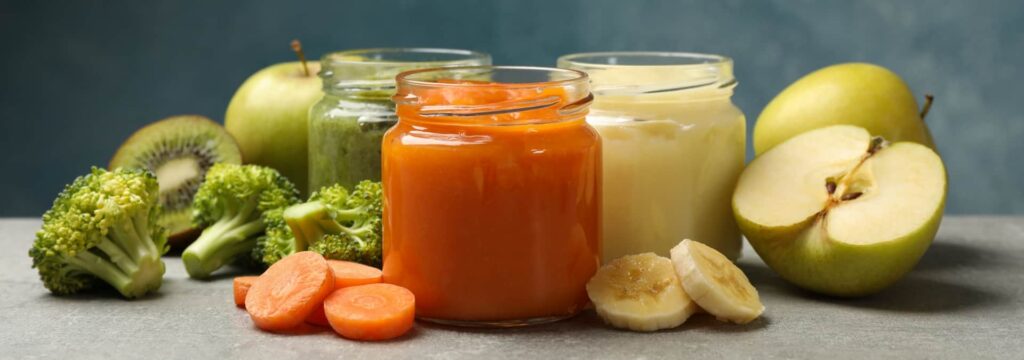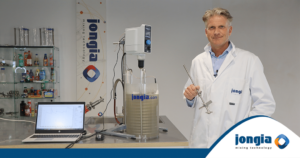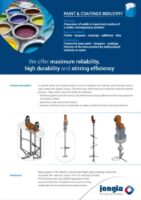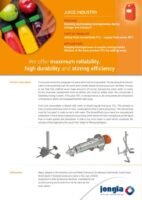
Baby Food Processing
How does baby food processing work?
As a supplier of industrial agitators, we understand the importance of quality and safety in the food industry, especially when it comes to producing baby food products. As a producer of baby food you need to meet strict regulations, provide nutritional quality, and maintain product safety while meeting consumer demand. In this article, we will provide a comprehensive guide to baby food processing, including solutions, regulations, and some of the most common products.
What do we mean with baby food processing?
When it comes to baby food processing, several factors come into play. As you all know, infants have unique dietary needs, and as a maker you need to consider this when producing food products. Baby foods come in a wide range of varieties, from pureed fruits and vegetables to dry cereals, and everything in between. The baby food aisle is filled with different brands and products, each offering something different to meet the demands of parents and their babies.
The regulations for baby food production
For the baby food production, you must adhere to strict regulations to ensure the safety and quality of the food products. The Food Safe program provides guidelines for food safety, while the Center for Food Safety and Applied Nutrition (CFSAN) oversees the safety of food products in the United States. The food supply chain must also be closely monitored to ensure that the food products are of high quality and safe for consumption. The monitoring starts at the beginning of the production process, because all the food products have followed a long process from production to the consumer.
What are the baby food processing techniques?
Baby food processing techniques vary depending on the type of product being produced. Thermal processing involves the use of heat to kill bacteria and other harmful microorganisms. High-pressure processing (HPP) uses pressure to destroy bacteria and pathogens, while heat processing involves cooking the food at high temperatures for a period of time. Heat steps are used to ensure that the finished product is safe for consumption, while vacuum cookers and industrial vacuum mixers are used to create a smooth and consistent texture.
It is clear that food processing techniques and equipment play a significant role in ensuring that baby food products are of high quality and safe for consumption. Reducing the carbon footprint of food processing techniques and reducing food waste are also essential factors in producing high-quality and safe baby food products. For optimizing the process we should start with the end in mind: The needs of your little one.
Some examples of baby food products
Baby food products come in various forms, including jarred baby foods, baby food pouches, dry cereals, baby cereals, frozen baby foods, and toddler foods. Each product type has its unique processing requirements to ensure safety and quality. Baby cereals are often refined cereals that have been processed to make them easier to digest for infants. Jarred baby foods are typically pureed fruits and vegetables that have been cooked and processed to ensure their safety. Baby food pouches are a newer product type that provides convenience and ease of use for parents on the go. Frozen baby foods often come in the form of frozen carrot cubes, which are easy to store and use.
Solid food and fresh food for infants
As infants grow, they begin to transition from pureed baby foods to solid foods. Solid foods provide a range of textures and flavors that help babies develop their taste preferences and chewing skills. Fresh food is an excellent option for babies as it provides a range of nutrients that are essential for growth and development. However, fresh food must be prepared and stored correctly to ensure its safety and quality.
Homemade baby food vs. commercial baby foods
Homemade baby food has become increasingly popular in recent years, with many parents opting to make their baby’s food rather than purchasing commercial baby foods. Fresh carrots are often used in homemade baby food, which provides a fruity flavor and a vibrant color that is appealing to babies. Homemade baby food provides parents with complete control over the ingredients and nutritional content of the food.
However, commercial baby foods have their advantages. They are convenient, require less time to prepare, and provide a wider range of flavors and textures than homemade baby food. However, there is some consumer confusion regarding the nutritional quality and safety of commercial baby foods. Parents must carefully read the labels and be aware of the nutritional content and ingredients of the products they purchase.
Nutritional quality and safety
Nutritional quality and safety are crucial factors in producing high-quality and safe baby food products. As a baby food maker you must take into account extra care to ensure that the products are free from heavy metals, have a suitable beta-carotene content, and meet color characteristics and parameters. Flavor combinations must also be considered to make sure that the product is appealing to babies while still being safe and nutritious. Dietary supplements and food additives are sometimes used to enhance the nutritional quality of baby food products.
Food poisoning is a significant concern in the baby food industry. The production of baby food products requires strict adherence to safety regulations and guidelines to prevent foodborne illnesses. The Matern Child Nutr and child nutritionists play an essential role in ensuring the safety and quality of baby food products. Product quality and safety must be closely monitored from production to storage to ensure that the finished product is of the highest quality and safe for consumption.
Baby Food Processing Summarized
Baby food processing requires careful consideration of the unique dietary needs of infants, strict adherence to regulations and guidelines, and the use of advanced processing techniques and equipment. Nutritional quality and safety must be closely monitored, and the finished product must meet high-quality standards. Whether parents choose to make their baby’s food at home or purchase commercial baby foods, it is essential to ensure that the products are safe and nutritious for babies to consume. As a supplier of industrial agitators, we understand the importance of quality and safety in the baby food industry and provide solutions to help baby food manufacturers produce high-quality and safe products.
Frequently Asked Questions
How does baby food processing work?
Baby food processing involves adhering to strict regulations, ensuring nutritional quality, and maintaining product safety. Producers need to ensure that their products meet consumer demand while fulfilling safety guidelines. Various techniques are employed to ensure food safety and quality throughout the production process.
What do we mean with baby food processing?
Baby food processing refers to the methods and practices used to create food specifically designed for infants. This includes understanding the unique dietary needs of infants and producing a wide range of baby food products, such as pureed fruits, vegetables, and cereals.
What are the regulations for baby food production?
Regulations for baby food production ensure food safety and quality. The Food Safe program provides essential guidelines, while the Center for Food Safety and Applied Nutrition oversees compliance in the U.S. It’s vital to monitor the entire food supply chain for safety from production to consumption.
What are the baby food processing techniques?
Baby food processing techniques include thermal processing, high-pressure processing (HPP), and heat processing. These methods focus on ensuring safety by killing harmful microorganisms while maintaining product texture and quality. Industrial tools like vacuum cookers are often used for consistent results.
What are some examples of baby food products?
Examples of baby food products include jarred foods, pouches, dry cereals, and frozen baby foods. Each type has specific processing requirements to maintain safety and quality. Common items like pureed fruits and frozen carrot cubes are popular choices that cater to infants’ dietary needs.
Contact our specialized team for all your questions

Tom Pruymboom
Sales Director
Area Worldwide

Bart Brouwer
Area Sales Manager
Area Worldwide
Technical Questions?

Sijko van der Veen
Application Engineer
Technical Specialist

Sijko van der Veen
Application Engineer
Technical Specialist
Popular Posts

Fermentation & Bioreactor Mixing Process
Bioreactors and Fermenters are culture systems to produce cells or organisms. They are used in various applications, including basic research and development, and the manufacturing of biopharmaceuticals, food and food additives, chemicals, and other products. A broad range of cell types and organisms can be cultivated in bioreactors and Fermenters, including cells (like mammalian cell lines, insect cells, and stem cells), microorganisms (like bacteria, yeasts, and fungi), as well as plant cells and algae. The words “Bioreactor” and “Fermenter” are basically the same thing.

How to avoid foaming in your mixing process?
Through years of experience, Jongia Mixing Technology knows the correct application to many mixing processes. So too with mixing processes where the elimination of foaming – which can occur through the behaviour of the recipe – is of great importance.

Tutorial: starch gelatinization – from raw starch to glucose syrup
Around the world, Jongia Mixing Technology has initiated numerous mixing processes using its agitators to produce modifications from raw starch and convert them into usable products. An example of a product where raw starch is one of the constituents is





